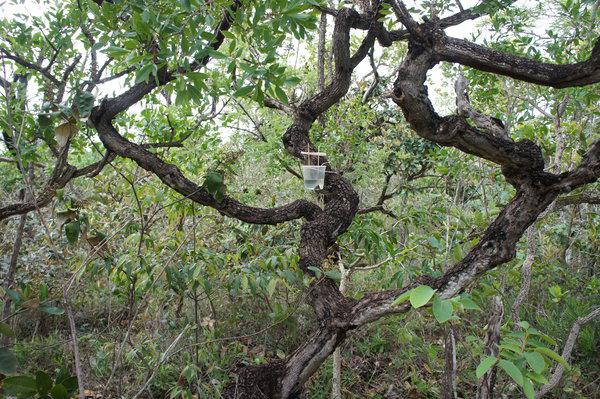Chaim José Lasmar
To guide conservation efforts, the project assess which environmental factors drive ant diversity at different spatial scales and the main species coexistence mechanism of distinct regions. Ant sampling will occur in the six Brazilian biomes and will also be measured the environmental factors representing conditions and resources for ants and evaluate the main community structuring mechanism (niche filtering or partitioning) in each biome. I also intend to assess which niche attributes are due to niche conservatism from evolutionary time that will elucidate how species respond to a quickly environmental change. Understanding such parameters will contributed for best management strategy for conservation.

Brazilian’s biomes biodiversity is threatened by human development such as growing deforestation by crops, grazing, and mining activities. One of the problems of Brazilian conservation policies is not managing each biome with their respective ecological characteristics, which might lead to further losses to many species. Indeed, ecological factors assume different influence and magnitude in different biomes. Taking into account that different ecological processes act at different spatial scales and, large scales has a strong influence at small ones; a comparison of the connection of those scales in different biomes would help to understand the dynamic and structure of ecological communities. In addition, it is not well understood how evolutionary processes are behind the contemporary ecological niches of current species and how they may answer to a future environmental change. Such knowledge might contribute for better conservation decisions.
Therefore, aiming to provide a solid basis to biological conservation decision makers in Brazil, the project aims to assess which environmental factors drive ant diversity at different spatial scales and the main species coexistence mechanism of distinct Brazilian biomes using ants as a model organism. Ants were chosen due to their high diversity, widespread distribution and sensitiveness to ecological factors influences, develop a variety and important ecological functions and present a variety of ecological niches.
The study will be taken at six Brazilian biomes. The fieldwork will divided the approach in two parts: first to sample ant diversity with pitfall traps and environmental factors at different spatial scales and another to verify the community structuring mechanisms with different liquid resources at different microhabitats. In addition, in each biome there will be speeches to local residents and small farmers in order to demonstrating the importance of ants, the biome conservation and the aims of the project.
The project will be the first one to apply a standardized collecting protocol in each of the six Brazilian biomes. In this sense, it has the potential to contribute for the conservation of extremely important hotspots of biodiversity and to enhance the current knowledge on ant global and local diversity, conservation, and evolution by addressing invertebrates, so often overlooked in favour of more charismatic large vertebrates.